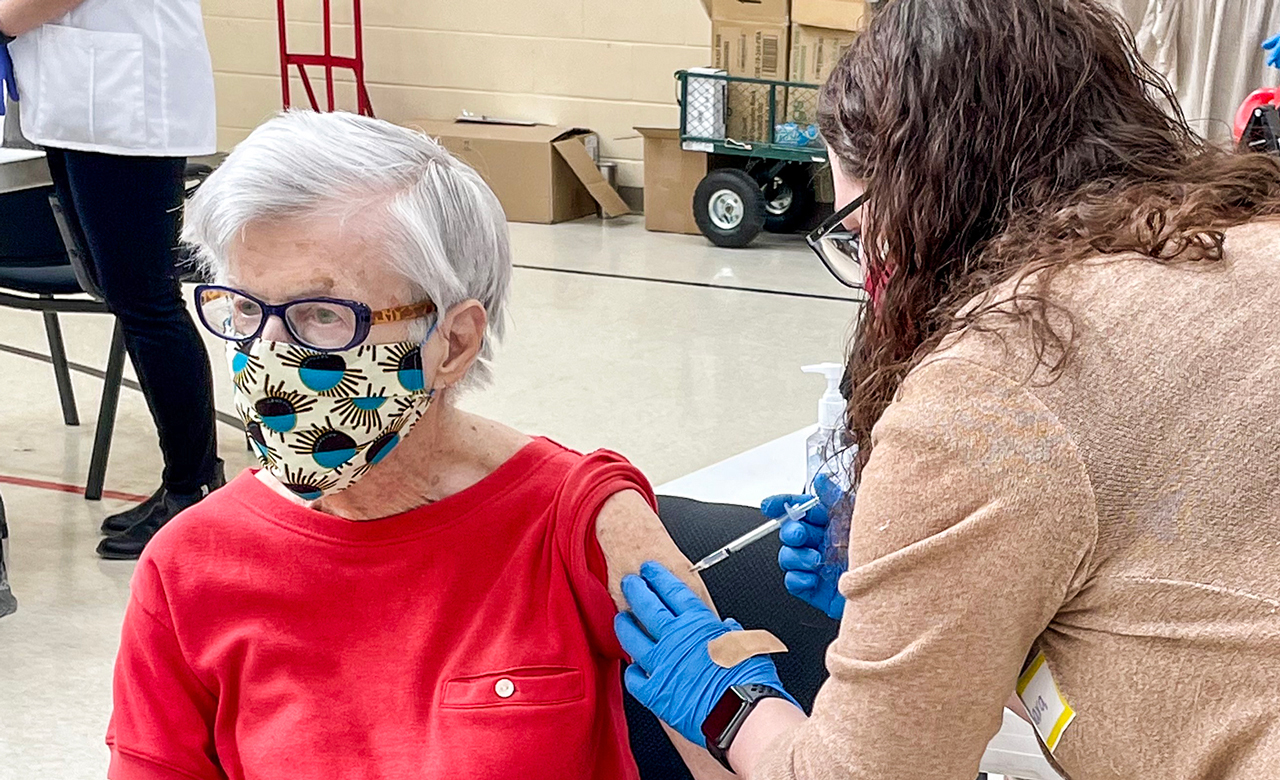Loren Bonner

Pharmacy technicians like Sara Dreyer have taken on more responsibility since the COVID-19 pandemic hit, and now that vaccines are available in communities across the United States, the role of the pharmacy technician is even more pronounced.
On a typical day, Dreyer, who works as a certified pharmacy technician (CPhT) at Towncrest Pharmacy in Iowa City will complete the entire process from start to finish for a patient receiving a COVID-19 vaccine: drawing up the vaccines in a dedicated area, checking patients in, preparing vaccine carts, administering the vaccine, and then releasing the patient after they have waited 15 minutes. Even on the back end, pharmacy technicians at Towncrest help with billing.
Dreyer said the pharmacy sees roughly 100 patients a day who want the COVID-19 vaccine. “It took a while to figure out the best workflow for us, but things are pretty smooth now,” she said.
In October 2020, HHS granted pharmacy technicians in every state the authority to administer vaccines to individuals ages 3 years and older under the supervision of a pharmacist and with certain requirements met, such as completion of a training program approved by the Accreditation Council for Pharmacy Education. The guidance was issued under the PREP Act for the COVID-19 public health emergency in the United States.
“Even though it’s more responsibility on us, pharmacists are able to focus on clinical services,” said Dreyer.
‘Step up on the career ladder’
William Schimmel, executive director and CEO of the Pharmacy Technician Certification Board (PTCB), said that identifying, supporting, and extending new responsibilities to high-performing technicians allows pharmacists to advance patient care, enhance services, and reduce turnover.
“Employers know that motivated technicians appreciate recognition and are seeking ways to demonstrate their skills,” said Schimmel.
In February 2021, PTCB launched the Assessment-Based Certificate in Immunization Administration, which shows that a CPhT holds the qualifications to safely deliver and manage immunizations and related tasks.
As of press time, PTCB has granted more than 800 certificates, with demand steady and increasing, said Schimmel. “Earning the PTCB certificate is a step up on the career ladder for CPhTs, especially for those pursuing the Advanced CPhT Certification,” he said. “In addition to [administering] immunizations, technicians play key roles in point-of-care testing with intake, history, and overview, allowing the pharmacist to focus on clinical decisions.”
Overall, he said, this helps a pharmacy with efficiency and reduces labor costs—which translates to greater stability for the pharmacy.
Sustainable immunization program at IHS
Through APhA’s Pharmacy-Based Immunization Administration by Pharmacy Technicians program, the Indian Health Services (IHS) is training IHS pharmacy technicians around the country from its Shiprock, NM, location. IHS delivers training for all IHS pharmacy technicians, mostly through a virtual format.
Up to 20 pharmacy technicians work at the Northern Navajo Medical Center in Shiprock, NM. As the assistant chief pharmacist, CDR Carol Cummins, PharmD, has been deliberate in advancing the role of pharmacy technicians within the medical center—even before the new HHS directive, which granted pharmacy technicians the authority to immunize.
“We now have a full-time schedule [with] a pharmacist and technician in the curbside setting the entire day,” said CDR Cummins. She said that allowing technicians to administer vaccinations gives pharmacists adequate time to counsel patients at the clinic or over the phone, as well as work with providers to fill patients’ medications.
“Right now, the conversation has evolved from the COVID-19 vaccination to the low rates of childhood vaccinations,” said Cummins. “We want to incorporate technicians into addressing that next.”
Cummins said that investing in a sustainable immunization program not only helps the community, but also gives pharmacy technicians at IHS—who are often hard to recruit—more incentive to stay.